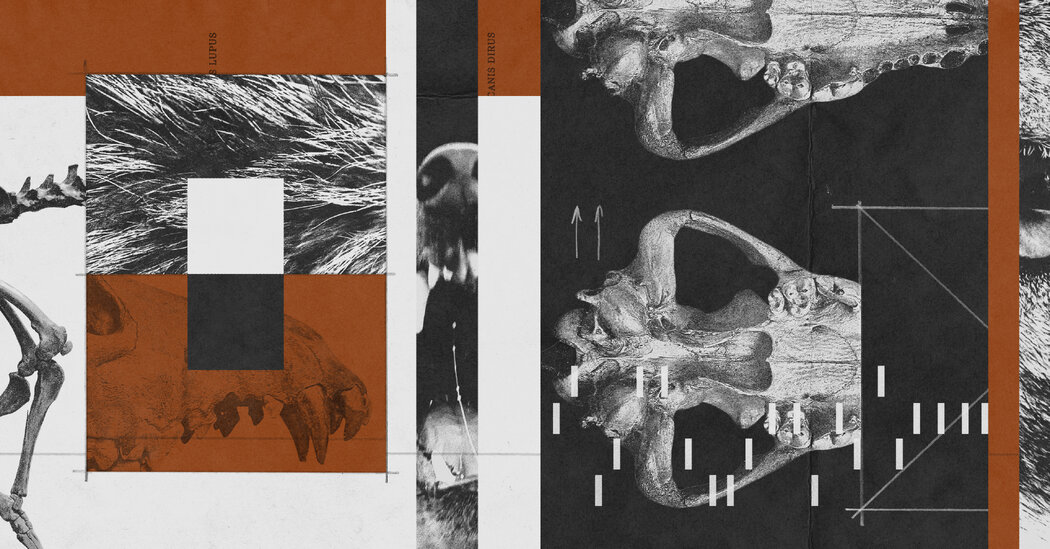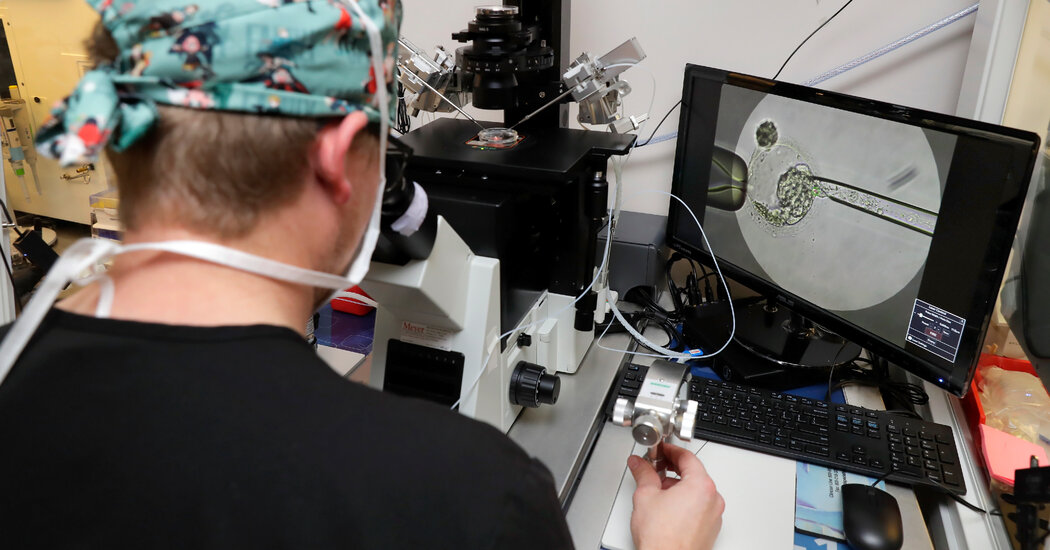“Over 10,000 years ago, a howl was lost to time.”
So begins a recent promotional video by Colossal Biosciences, a biotechnology company, whose narrator speaks in a voice that sounds as if it, too, was resurrected from the past: a 1950s newsreel or biology-class explainer. Quick cuts of scientific B-roll — frozen blood in vials, a microscope, a white-coated hand jiggling a computer joystick — eventually give way to a lingering close-up of a wolf opening a bright, golden eye. “Today,” the voice intones, “it returns.”
The video introduces viewers to Romulus and Remus, “the first two dire wolves since the Pleistocene era.” In under three minutes, the very cute pups mature from tiny fluff balls, stumbling through their first steps, to regal youngsters romping in drifts of snow that accentuate their own (luxurious) white coats. “Roughhousing may look like play,” the narrator tells us, “but it’s serious practice for life in the pack.” The voice then shows a third, younger pup, Khaleesi — “the first female dire wolf brought back from extinction.”
Colossal brands itself “the de-extinction company” and has announced plans to bring back woolly mammoths and dodos and Tasmanian tigers, some of the biggest stars in the species extermination hall of fame. On a planet with as many as one million species at risk of disappearing, many within decades, the company is promising an undo button.
Many media outlets, including People and CNN, breathlessly promoted Colossal’s story; Time featured a cover portrait of Remus with a big red line through the word “extinct.” On my Facebook feed, clickbait link aggregators trumpeted “the world’s first de-extinction” in posts that were awe-struck and joyful. Any commenter who questioned the company’s narrative was shouted down as a hater. Amid the relentlessly grim news about the state of our planet, here was a tale of pure inspiration, of futuristic science triumphing over the tragic losses of a mythic past.
De-extinction is a distinctly modern fantasy: the extremely appealing idea that we can, with just some pipettes and computers, undo the destruction we continue to cause the natural world. So it’s fitting that the first animal whose creation Colossal announced was a dire wolf — an animal that exists, in the public imagination, primarily as a fantasy. Colossal’s advisers include the “Game of Thrones” author George R.R. Martin and two stars of the HBO adaptation, and a press photo showed the animals sitting on the show’s Iron Throne. Many commenters were shocked not by the advancing science of genetic engineering but rather by the revelation that dire wolves were once real animals.
Dire wolves thrived in the Americas for more than 200,000 years, adeptly filling so many ecological niches that their remains have been found from Alaska to Peru. More than 4,000 wolves were pulled from the La Brea Tar Pits in Los Angeles alone. They are understood to have been hunters of the many large mammals that populated the Americas before the arrival of humans dramatically changed the continents’ ecology. They then disappeared alongside their prey, among the earliest victims of what would become an ongoing crisis of human-driven extinction.




